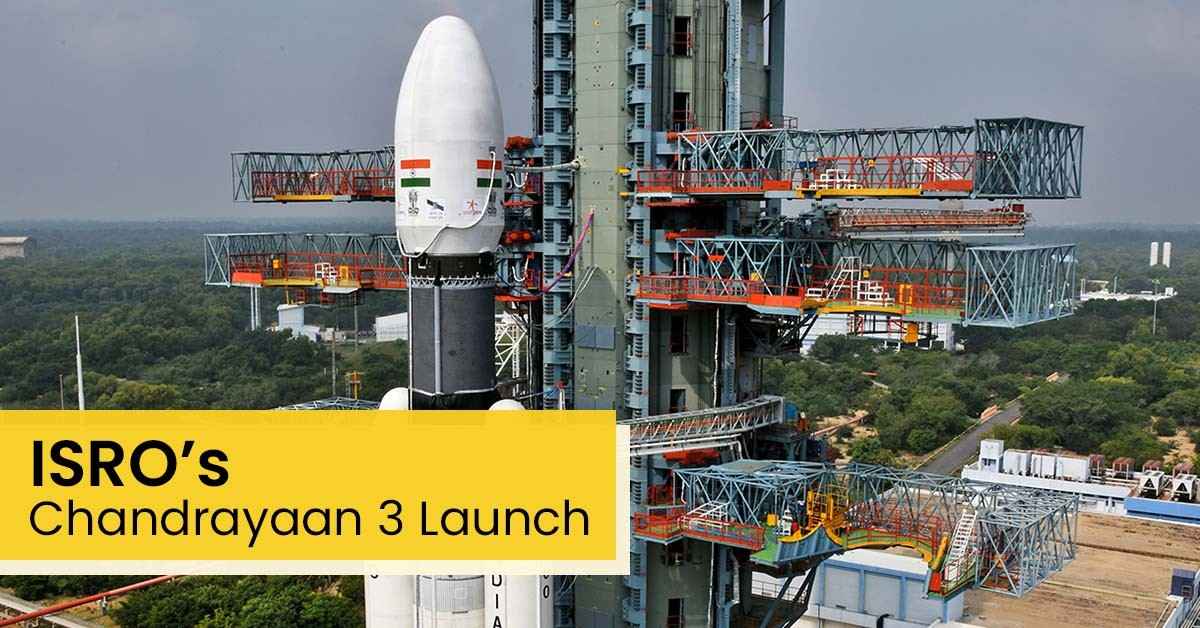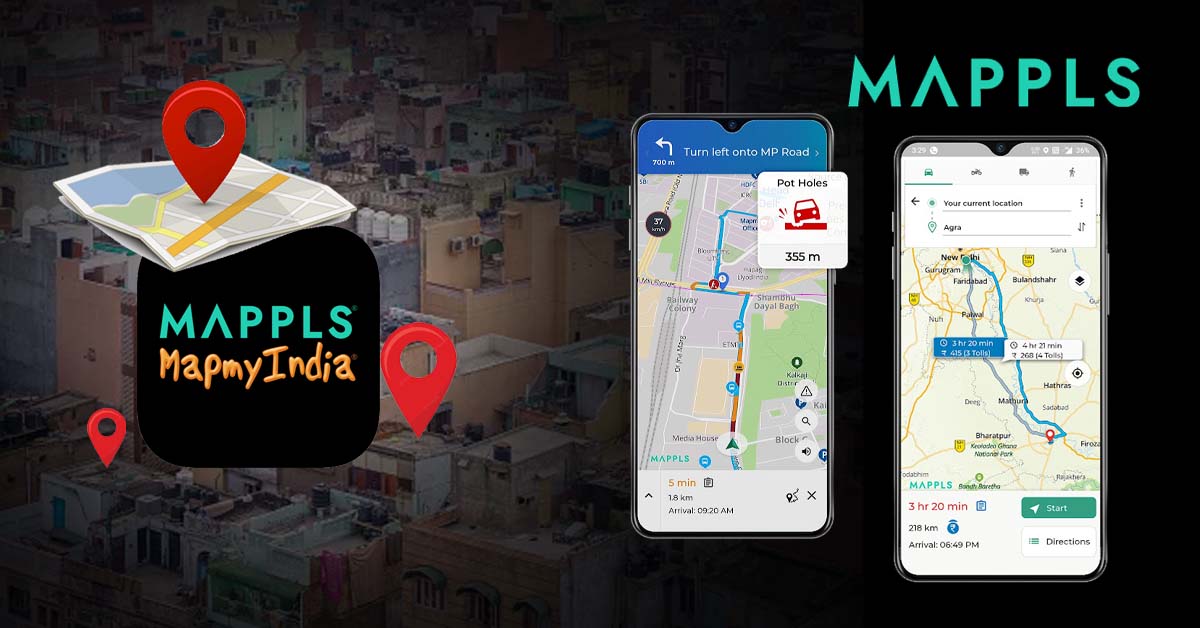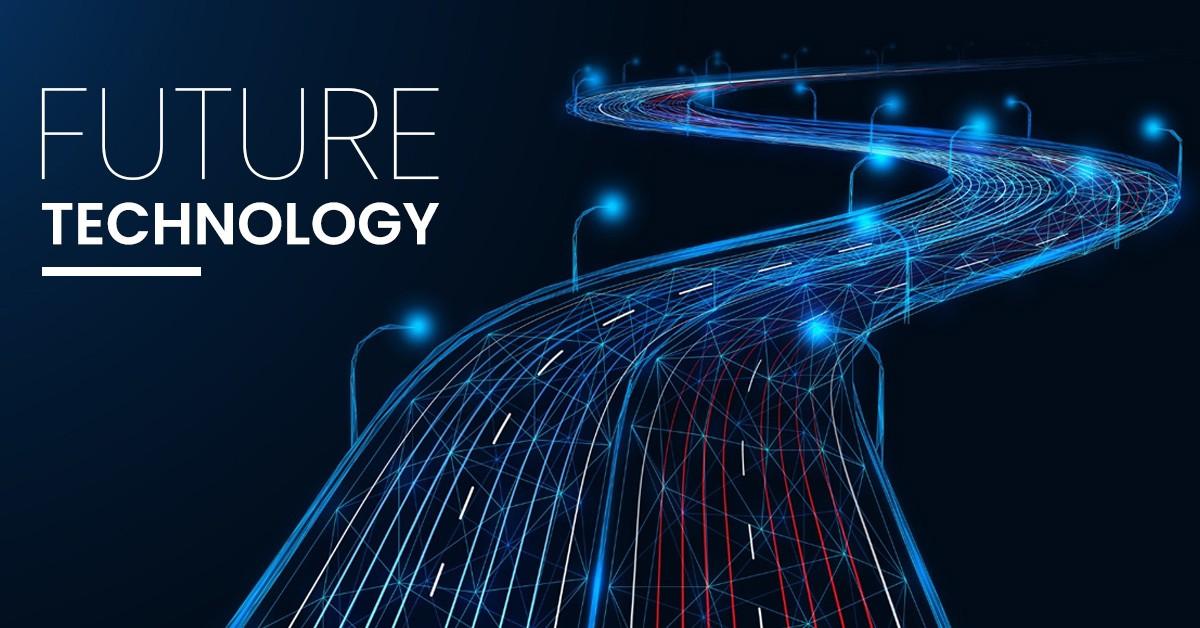Chandrayaan 3, All preparations for the launch of India’s mission moon are in full swing. ISRO (Indian Space Research Organisation) has decided to launch this ambitious project into space soon.
It will be a proud moment for the whole nation. We want people to know about the quality and severity of perseverance ISRO space scientists have put into this ambitious space project.
You will learn many things about India’s moon mission in this post. We suggest you read this post till the end for this reason.
What Is Chandrayaan 3 Mission?
You need to know many things about it. This is one of those. ISRO has initiated this follow-on mission to Chandrayan-2. The objective is to demonstrate its safe landing and roving on the moon’s surface.
Lander and Rover’s configuration is one of its key specifications. It is about to be launched from Sriharikota. The potential of the following components will be leveraged to accomplish this task:
- LVM3 from SDSC SHAR.
- Propulsion module.
The power of this propulsion module will be utilized to carry the entire Lander and Rover configuration for 100 Kilometres inside the Lunar Orbit.
Let us now tell you some more important things about the mission and the spacecraft.
Chandrayaan 3 Launch Date
Chandrayaan-3 is set to launch in India on July 14 at 5:05 a.m. EDT from Sriharikota, India’s east coast.
All scientists and Indian nationals are waiting impatiently for its launch. The success of this mission will put India among the nations that landed the spacecraft softly at the moon’s surface.
Mission’s Total Cost
Mission’s total cost is around Rs2.5bn ($35m). This cost excludes the cost of the launch vehicle.
The launch vehicle is expected to cost Rs3.5bn ($50m) extra.
All in all, this entire mission could cost more than INR 6 billion ($85 million).
Name of the Chandrayaan 3 Launch Vehicle
ISRO has decided to use GSLV Mark 3 (GSLV Mk III) as the launch vehicle for the spacecraft. This three-stage heavy launch vehicle was used to launch Chandrayaan 2 in 2019.
A core liquid booster (L110), two solid rocket boosters (S200) on both sides and a cryogenic upper stage (C25), two Vikas engines are the specifications of a GSLV Mark 3 (GSLV Mk III) launch vehicle.
India’s biggest cryogenic engine CE-20 has been installed in it to power its upper stage. Both Vikas engines installed in it burn 110t of fuel to power its core stage.
Also Read, FedEx and UPS Will Soon Be Flying Pilotless Planes. How Safe Are They?
The Lander Embedded In Chandrayaan 3
A passive Laser Retroreflector Array (Lander) has been embedded in this spacecraft to study the moon’s lunar laser ranges.
The team has persevered to ensure accurate extraction of the moon’s facts. In-situ experiments have already been initiated to run the mission smoothly.
Objectives of India’s Moon Mission
ISRO and the central government of India determined a couple of important lunar missions. A team of experienced space specialists has been prepared for it. The team is dedicating its wealth of experiences, resources, and time to accomplish those missions. Given below is the list of missions for your reference:
- Demonstration of Safe and Soft Landing on Moon’s Surface.
- Demonstrate the Rover roving on the Lunar Surface.
- To carry out all important in-situ scientific experiments.
How is ISRO Going To Achieve These Objectives?
We have found the answer to this million-dollar question for you. ISRO has equipped the Lander with several advanced technologies for it. Take a look at the list of technologies incorporated in the Lander:
- Altimeters: Altimeters are based on Laser & RF.
- Velocimeters: LDV (Laser Doppler Velocimeter Camera), and LHVC (Lander Horizontal Velocity Camera) are also part of it.
- Inertial Measurement: Laser Gyro-based IRAAP (Inertial Referencing And Accelerometer Package) has also been incorporated into it.
- Propulsion System: ISRO Chandrayaan 3 also has 800N Throttleable Liquid Engines, 58N attitude thrusters & Throttleable Engine Control Electronics.
- Navigation, Guidance & Control (NGC): The team has dedicated its wealth of time, resources, and infrastructure to equip it with Powered Descent Trajectory design and associated software elements.
- Hazard Detection and Avoidance: Highly advanced cameras have been installed in the Lander to avoid any possible threat to the Lander and India’s moon mission this time. What is more important is the installation of complex but advanced processing algorithms. This Lander Hazard Detection & Avoidance Camera and Processing Algorithm combination is for the purpose of the mission’s successful completion.
- Rover’s Name: ISRO has decided to utilize Pragyan Rover to help the lander travel 100 KM. It will play an important role in enhancing the research during India’s moon mission throughout the duration.
The list does not end here only. Another key thing you will get to know is the role of Bollywood in it. We suggest you read this post till the end for this reason.
What Are The Specialties of Chandrayaan 3 Spacecraft?
ISRO Chandrayaan 3 has several specifications. We suggest you look at the list below carefully:
-
SHAPE
SHAPE (Spectro-polarimetry of Habitable Planet Earth) payload is one of the key specialties of this propulsion module. It will study the following metrics of Earth from the Lunar Orbit:
1.1 Spectral metric measurements.
1.2 Polarimetric measurements.
ISRO Chandrayaan 3 has many more specifications. Let us now talk about those here.
-
Lander Payloads
ChaSTE (Chandra’s Surface Thermophysical Experiment) will measure the following:
2.1. Thermal Conductivity
2.2. Temperature
Both play an important role in the process of Lunar Seismic Activity. Accurate measurement of LSA will help measure seismic activity around the landing site. Its plasma density and variations will be estimated by Langmuir Probe (LP).
-
Rover Payloads
The elemental composition will be driven in the area of the landing site. The task will be accomplished using the following:
3.1. APXS (Alpha Particle X-ray Spectrometer).
3.2.LIBS (Laser-Induced Breakdown Spectroscopy)
An ILM (Indigenous Lander module), PM (Propulsion module), and a Rover
Part of ISRO Chandrayaan. These will help develop and demonstrate technological innovations needed for planetary missions.
Before deploying the Rover, the lander will first ensure its smooth landing on the Lunar surface. Hassle-free landing is important as the Rover will analyze in-situ chemicals of the lunar surface throughout its mobility.
This is the reason ISRO has equipped the Lander and Rover with special payloads. These payloads are required for experiments at the lunar surface.
-
What Will Be The Function of The Propulsion Module?
This question must have come to your mind at least once. Let us tell you something about it.
The Propulsion Module (PM) will carry the Lander Module (LM). It will carry LM from the LVI (Launch Vehicle Injection) till the last lunar 100 Kilometre Circular Polar Orbit. It will then separate the Lander Module from the Propulsion Module.
The Propulsion Module also has a scientific payload. This payload is like a value addition. It will be operated after the Lander Module gets separated.
What is more important is the launcher ISRO has identified for Chandrayaan 3 is GSLV MK3. It will be assigned the responsibility of placing the integrated module in an EPO (Elliptic Parking Orbit) of size ~170 x 36500 km.
-
How can we forget the Landing Leg Mechanism?
ISRO Chandrayaan 3 has undergone multiple Lander special tests successfully. These tests were to demonstrate all advanced technologies in the earth conditions mentioned above. All these tests have been performed via the following:
5.1. Integrated Cold Test
5.2. Integrated Hot test
5.3. Lander Leg Mechanism Performance Test
5.4. Integrated Cold Test:
A helicopter was used as a test platform to demonstrate Integrated Sensors & Navigation Performance Test.
-
Integrated Hot test
A Tower Crane was used as a test platform to demonstrate Closed Loop Performance Tests with Sensors, Actuators and NGC.
-
Lander Leg Mechanism Performance Test
LLMPT (Lander Leg Mechanism Performance Test) on a lunar simulant test bed was performed. It simulated different touchdown conditions.
-
Mission Life (Lander & Rover)
One Lunar Day equal to 14 Earth days is the specification of India’s moon mission’s parameters.
-
Landing Site
It is 4 km x 2.4 km 69.367621 S, 32.348126 E.
-
Science Payloads
Lander is one of the most important specifications of the Chandrayaan 3 mission. Full credit goes to the following for this:
10.1. RAMBHA (Radio Anatomy of Moon Bound Hypersensitive Ionosphere And Atmosphere).
10.2. ChaSTE (Chandra’s Surface Thermo Physical Experiment).
10.3. ILSA (Instrument for Lunar Seismic Activity).
10.4. LRAR (Laser Retroreflector Array Rover).
10.5 APX (Alpha Particle X-ray Spectrometer).
10.5 LIBS PM (Laser-Induced Breakdown Spectroscope), and Propulsion Module.
10.6 SHAPE (Spectro-polarimetry of Habitable Planet Earth).
Also Read, 4 Future Technology Trends of 2023
-
Two Modules Configuration
This type of configuration is also an important parameter of the spacecraft designed for India’s moon mission this time. The propulsion Module and Lander Module are two important specifications of the Lander.
The Propulsion Module is to carry the Lander from Launch Injection to Lunar Orbit. The Lander Module is accommodated inside the spacecraft’s lander.
-
Chandrayaan 3 Weight
The total weight of Chandrayaan 3 is 3900 Kilograms. Its Propulsion Module weighs up to 2148 Kilograms. Its Lander Module’s weight is almost 1752 Kilograms including the 26 kg weight of Rover.
-
Power Generation
Power generation is another important parameter of it. A 758W Propulsion Module, 738W Lander Module 738W, WS with Bias, and 50W Rover are specifications of it.
-
Communication
Chandrayaan Mission 3 has another important parameter. This parameter is communication. Its Propulsion Module communicates with IDSN.
Its Lander Module ensures communication with IDSN and Rover. Chandrayaan-2 Orbiter has also been planned to ensure a contingency link.
As far as its Rover is concerned, it communicates only with Lander.
-
Lander Sensors
The Lander Sensor Parameter has multiple specifications. The list includes but is not limited to the following only:
15.1. LIRAP (Laser Inertial Referencing and Accelerometer Package.
15.2. KaRA (Ka-Band Altimeter).
15.3. LPDC (Lander Position Detection Camera).
15.4. LHDAC (Lander Hazard Detection & Avoidance Camera).
15.5. LASA (Laser Altimeter).
15.6. LDV (Laser Doppler Velocimeter).
15.7. LHVC (Lander Horizontal Velocity Camera).
15.8. MSS (Micro Star Sensor).
15.9. ITS (Inclinometer & Touchdown Sensors).
-
Lander Actuators
This specific parameter reaction wheels – 4 nos (10 Nms & 0.1 Nm).
-
Lander Propulsion System
The Lander Propulsion System is another important parameter of the Chandrayaan 3 mission of ISRo. Listed below are some specifications of this parameter:
17.1. Bi-Propellant Propulsion System (MMH + MON3).
17.2. 4 nos. of 800 N Throttleable engines & 8 nos. of 58 N.
17.3. Throttleable Engine Control Electronics.
17.4. Lander Mechanisms:
Lander leg, Rover Ramp (Primary & Secondary), Rover, ILSA, Rambha & Chaste Payloads, Umbilical connector Protection Mechanism, and X- Band Antenna are important specifications of Lander Mechanisms parameters.
-
Lander Touchdown Specifications
Less Than or Equal to ≤ 2 m / sec Vertical velocity, Less than Equal to ≤ 0.5 m / Horizontal velocity, and Less Than or Equal to ≤ 120 tSlope are the specifications of the Lander Touchdown parameter of Chandrayaan 3 mission being launched into the space.
ISRO Chandrayaan 3 features at least 3 Payloads. ISRO Chandrayaan 3 features at least 3 Payloads.
All three payloads have several specifications. We will talk about their specifications here. These specifications will help payloads achieve their objectives to make India’s moon mission successful.
18.1. Lander Payloads
RAMBHA, ChaSTE, ILSA, and LRA are the specifications of the Lander Payloads.
RAMBHA (Radio Anatomy of Moon Bound Hypersensitive Ionosphere and Atmosphere) will help India’s moon mission measure surface plasma density as well as changes this time with Langmuir Probe.
ChaSTE (Chandra’s Surface Thermo Physical Experiment) will measure the Lunar surface’s thermal properties around the polar region.
The instrument For Lunar Seismic Activity (ILSA) will measure seismic activity near the landing site. It will also play an important role in the process of delineating the structure of the Lunar crust and mantle
LRA (LASER Retroreflector Array) will act like a passive instrument required to understand the dynamics of the Lunar system.
18.2. Rover Payloads
LIBS and APXS are two important satisfaction of Rover Payloads of this spacecraft.
LIBS (LASER Induced Breakdown Spectroscope) will be essential to drive the chemical composition and infer mineralogical composition to advance your understanding of the moon’s surface and Qualitative and quantitative elemental analysis.
APXS (Alpha Particle X-ray Spectrometer (APXS) determines the elemental composition of the Moon’s soil and rocks near the moon’s landing site. It could be (Mg, Al, Si, K, Ca, Ti, or Fe).
18.3. Propulsion Module Payloads
SHAPE is an important satisfaction of Propulsion Module Payloads.
SHAPE(Spectro-polarimetry of Habitable Planet Earth) will help us probe into a variety of Exo-planets capable of qualifying for habitability (or for the presence of life). It includes discoveries of smaller planets in reflected light in the future.
These are a couple of important parameters and specifications of Chandrayaan 3, one of the most ambitious space missions of ISRO.
You will understand its importance once you know a couple of things about its predecessors. Therefore, we suggest you know a couple of things about its previous version.
Time To Know The Surprise
We promised you a surprise. We have it for you. Someone circulated fake news about Akshay Kumar donating earnings from Mission Mangal Movie to India’s 3rd lunar mission named Chandrayaan 3. But Mr. R Balki, the co-produces of Mission Mangal, rubbished the news completely.
Final Words
The launch of ISRO Chandrayaan 3 will be a proud moment for every India. The entire nation is waiting for the 14th of July 2023 impatiently. What is more important is the way everyone is waiting for the spacecraft’s touchdown on the Lunar Surface and the accomplishment of all other important objectives.
Stay tuned as we are also about to guide you through the entire history of the Chandrayaan Mission. This includes information about Chandrayaan 1 and Chandrayaan 2 missions and the outcome of these missions.
FAQs:
 What Is The Total Cost of India’s Chandrayaan 3 Mission?
What Is The Total Cost of India’s Chandrayaan 3 Mission?
The cost of India’s Chandrayaan 3 mission is believed to be approximately Rs2.5bn ($35m). This cost does not include the cost of the launch vehicle. The launch vehicle will cost Rs3.5bn ($50m) more. Therefore, the total cost of this entire mission is expected to be up to or more than INR 6 billion ($85 million).
 What Is The Name of Chandrayaan 3 Launch Vehicle?
What Is The Name of Chandrayaan 3 Launch Vehicle?
The name of the Chandrayaan 3 launch vehicle is GSLV Mark 3 (GSLV Mk III). ISRO has already used this three-stage heavy launch vehicle to launch Chandrayaan 2 in 2019.
 What Is The Objective Of Chandrayaan 3 Mission for ISRO?
What Is The Objective Of Chandrayaan 3 Mission for ISRO?
The objective of the Chandrayaan 3 mission for ISRO is the safe, successful, and soft landing of spacecraft on the Lunar Surface in addition to Roving and accomplishments of necessary experiments.
 What Is Chandrayaan 3 Rover’s Name?
What Is Chandrayaan 3 Rover’s Name?
Chandrayaan 3 Rover’s name is Pragyan Rover. It will help the lander travel a distance of 100 KM to enhance the research during India’s moon mission throughout the duration.
 Which Lander ISRO has Embedded In Chandrayaan 3 Mission?
Which Lander ISRO has Embedded In Chandrayaan 3 Mission?
ISRO has embedded a Passive Laser Retroreflector Array (Lander) in Chandrayaan 3 mission. All ISRO scientists have worked closely on this aspect to ensure accurate extraction of the moon’s facts. The team has already initiated in-situ experiments to run the mission smoothly. It will carefully and accurately study the lunar laser ranges of the moon.
 What Is The Launch Date of ISRO Chandrayaan 3 Mission?
What Is The Launch Date of ISRO Chandrayaan 3 Mission?
The launch date of ISRO Chandrayaan 3 mission is 14th July 2023.




